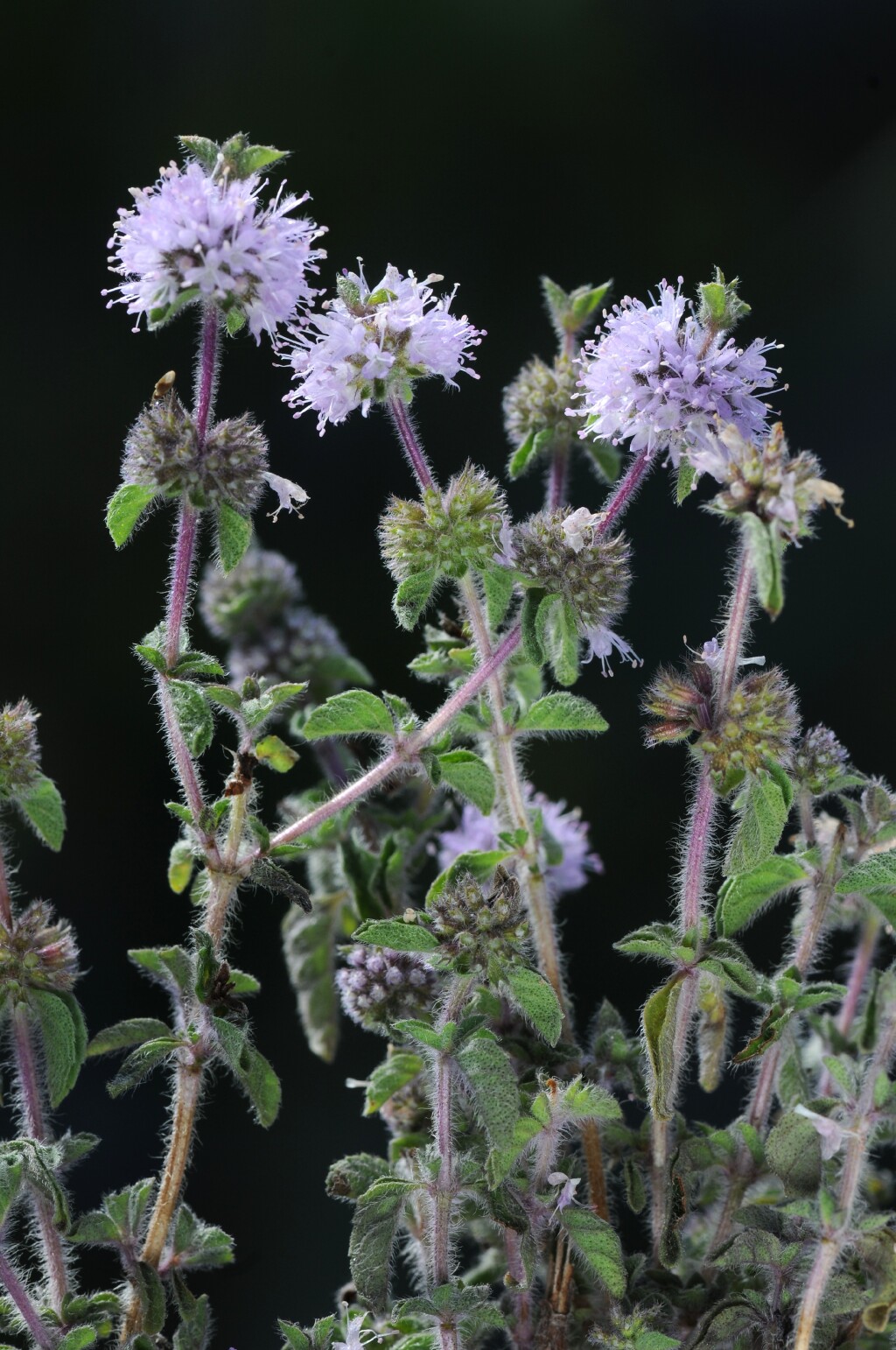Mentha pulegium
L. PennyroyalAscending to decumbent herb to c. 50 cm high, sometimes rhizomatous; lower stem prostrate, rooting at the nodes; at least the upper stems villous. Leaves obovate, elliptic or almost orbicular, 6–30 mm long, 4–20 mm wide, variably hirsute to villous, apex obtuse or rounded, margin entire or with small blunt serrations; petiole 1–6 mm long. Flowers in dense many-flowered clusters in axils of distal and often to basal leaves; pedicels much shorter than calyx. Calyx 2–3 mm long, 10-veined, lobes acute to acuminate, anterior pair narrower and often slightly shorter, one-quarter to half as long as tube, hirsute; corolla ciliate, usually pale-mauve to lilac, exceeding calyx by c. 2 mm, lobes 1.5–2 mm long, the posterior one entire or barely emarginate; anthers strongly exserted. Flowers mostly Jan.–Apr.
MuM, Wim, GleP, VVP, VRiv, MuF, GipP, OtP, WaP, Gold, CVU, GGr, DunT, NIS, WPro, HSF, HNF, OtR, Strz, VAlp. Also naturalised WA, SA, NSW, Tas. Native to Europe, extending eastwards to Iran. Common on ground prone to seasonal waterlogging, usually in open sites (pasture, grassland etc.). Carr et al. (1992) rated the species as a 'serious' environmental weed of a number of vegetation formations in Victoria.
Conn, B.J. (1999). Lamiaceae. In: Walsh, N.G.; Entwisle, T.J., Flora of Victoria Vol. 4, Cornaceae to Asteraceae, pp. 418–459. Inkata Press, Melbourne.
 Spinning
SpinningCarr, G.W., Yugovic, J.V.; Robinson, K.E, (1992). Environmental weed invasions in Victoria: Conservation & Management Implications. Dept. of Conservation & Environment, & Ecol. Horticulture .




